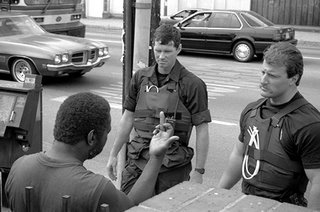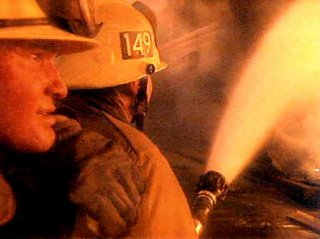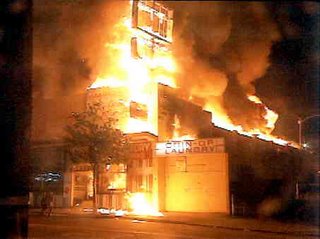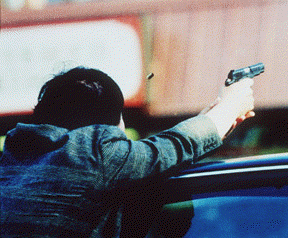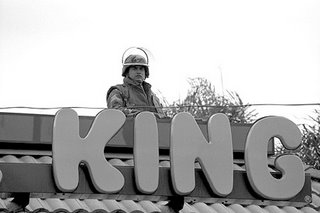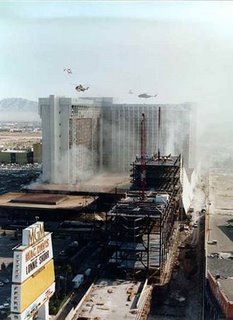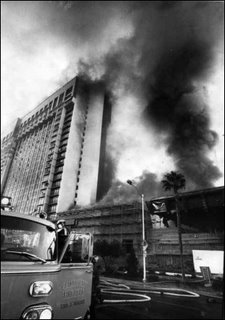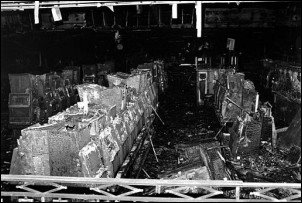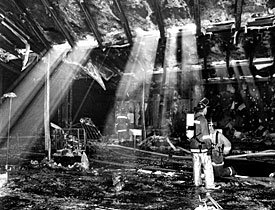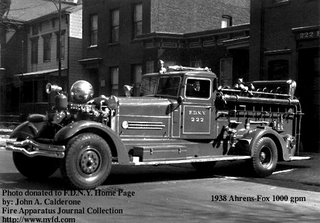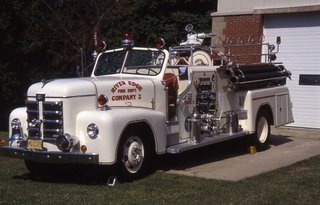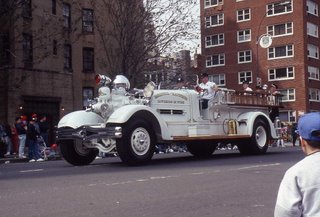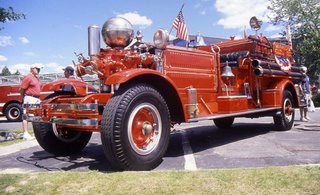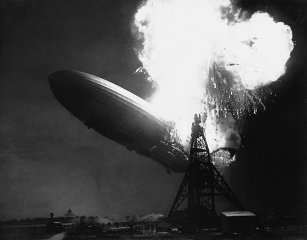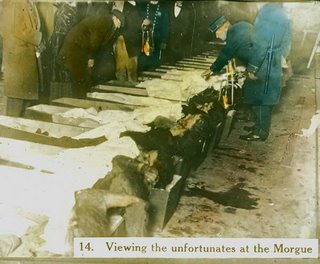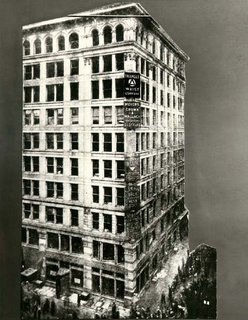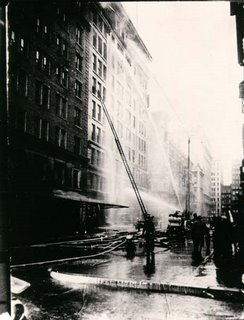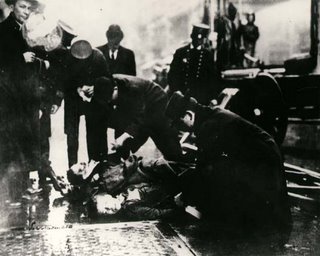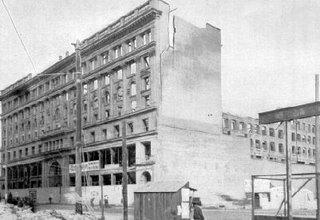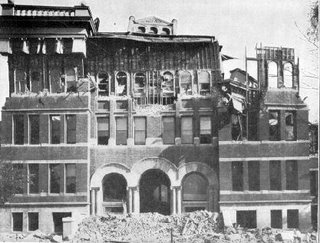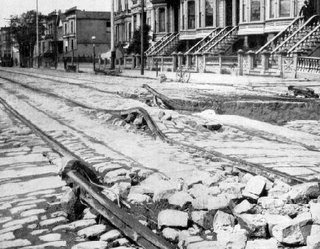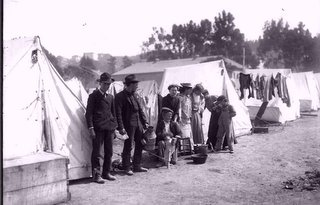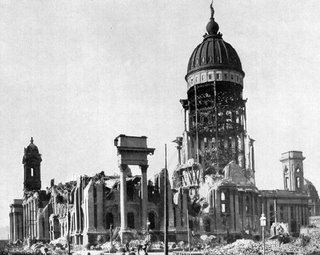This is another article by another article. The best reference and credit I can offer is given. The star of life is a symbol of the EMS service, I know this is about the fire service history, but as the days pass the role of EMS is entering into the fire service more and more. EMS is as important as basic firefighting skills.
The Blue "Star of Life" -- The Emergency Medical Care Symbol
by Arline Zatz
Just as a pharmacists have the mortar and pestle and doctors have the caduceus, Emergency Medical
Technicians have a symbol, its use is encouraged both by the American Medical Association and the Advisory
Council within the Department of Health, Education and Welfare. The symbol applies to all emergency medical
goods and services which are funded under the DOT/EMS program.
We see the "Star of Life" constantly, whether it be on ambulances or uniforms. But, how many realize what
this symbol represents and how it was born? Not too many, judging from the random survey I conducted after having
realized I had no idea myself.
Designed by Leo R. Schwartz, Chief of the EMS Branch, National Highway Traffic Safety Administration
(NHTSA), the "Star of Life" was created after the American National Red Cross complained in 1973 that they
objected to the common use of an Omaha orange cross on a square background of reflectorized white which clearly
imitated the Red Cross symbol. NHTSA investigated and felt the complaint was justified.
The newly designed, six barred cross, was adapted from the Medical Identification Symbol of the American
Medical Association and was registered as a certification mark on February 1, 1977 with the Commissioner of
Patents and Trade-marks in the name of the National Highway Traffic Safety and Administration. The trademark
will remain in effect for twenty years from this date.
Each of the bars of the blue "Star of Life" represents the six system function of the EMS, as illustrated
below: The capitol letter "R" enclosed in the circle on the right represents the fact that the symbol is a "registered"
certification.
The snake and staff in the center of the symbol portray the staff Asclepius who, according to Greek
mythology, was the son of Apollo (god of light, truth and prophecy). Supposedly Asclepius learned the art of healing
from the centaur Cheron; but Zeus - king of the gods, was fearful that because of the Asclepius knowledge, all men
might be rendered immortal. Rather than have this occur, Zeus slew Asclepius with a thunderbolt. Later, Asclepius
was worshipped as a god and people slept in his temples, as it was rumored that he effected cures of prescribed
remedies to the sick during their dreams.Eventually, Zues restored Asclepius to life, making him a god.
Asclepius was usually shown in a standing position, dressed in a long cloat, holding a staff with a serpent
coiled around it. The staff has since come to represent medicine's only symbol. In the Caduceus, used by physicians
and the Military Medical Corp., the staff is winged and has two serpents intertwined. Even though this does not hold
any medical relevance in origin, it represents the magic wand of the Greek deity, Hermes, messenger of the gods.
The staff with the single serpent is the symbol for Medicine and Health and the winged staff is the symbol for
peace. The Staff with the single serpent represents the time when Asclepius had a very difficult patient that he could
not cure, so he consulted a snake for advice and the patient survived. The snake had coiled around Asclepius's staff
in order to be head to head with him as an equal when talking. The Winged staff came about when Mercury saw two
serpents fighting,and unable to stop them any other way placed his staff between them causing them to coil up his
winged staff.
The Bible, in Numbers 21:9, makes reference to a serpent on a staff: "Moses accordingly made a bronze
serpent and mounted it on a pole and whenever anyone who had been bitten by a serpent looked at the bronze
serpent, he recovered.
Who may use the "Star of Life" symbol? NHTSA has exclusive rights to monitor its use throughout the
United States. Its use on emergency medical vehicles certifies that such vehicles meet the U.S. Department of
Transportation standards and certify that the emergency medical care personnel who use it have been trained to
meet these standards. Its use on road maps and highway signs indicates the location or access to qualified
emergency care services. No other use of the symbol is allowed, except as listed below:
States and Federal agencies which have emergency medical services involvement are authorized to permit use
of the "Star of Life" symbol summarized as follows:
1. As a means of identification for medical equipment and supplies for installation and use in the Emergency
Medical Care Vehicle-Ambulance.
2. To point to the location of qualified medical care services and access to such facilities.
3. For use on shoulder patches worn only by personnel who have satisfactorily completed DOT training courses or
approved equivalents, and for persons who by title and function administer, directly supervise, or participate in all or
part of National, State, or community EMS programs.
4. On EMS personnel items - badges, plaques, buckles, etc.
5. Books, pamphlets, manuals, reports or other printed material having direct EMS application.
6. The "Star of Life" symbol may be worn by administrative personnel, project directors and staff, councils and
advisory groups. If shoulder patches are worn, they should be plain blue "Star of Life" on a white square or round
background. The function, identifying letters or words should be printed on bars and attached across the bottom
separately. The edges of the basic patch and functional bars are to be embroidered.
Special function identification and physical characteristics must be adhered to when applying the "Star of Life" to
personal items, as follows:
a) Administrative and dispatcher personnel must use a silver colored edge, and the staff of Asclepius should be with
a silver colored serpent. These items do not need a white background.
b) The shoulder patches and other EMS patches may be displayed on uniform pockets and the symbol can also be
placed on collars and headgear.
This article was taken from Rescue-EMS Magazine, July-August 1992
THE STAR OF LIFEEach of the six "points" of the star represents an aspect of the EMS System. They are:
Detection
Reporting
Response
On Scene Care
Care in Transit
Transfer to Definitive Care
The staff on the star represents Medicine and Healing.

